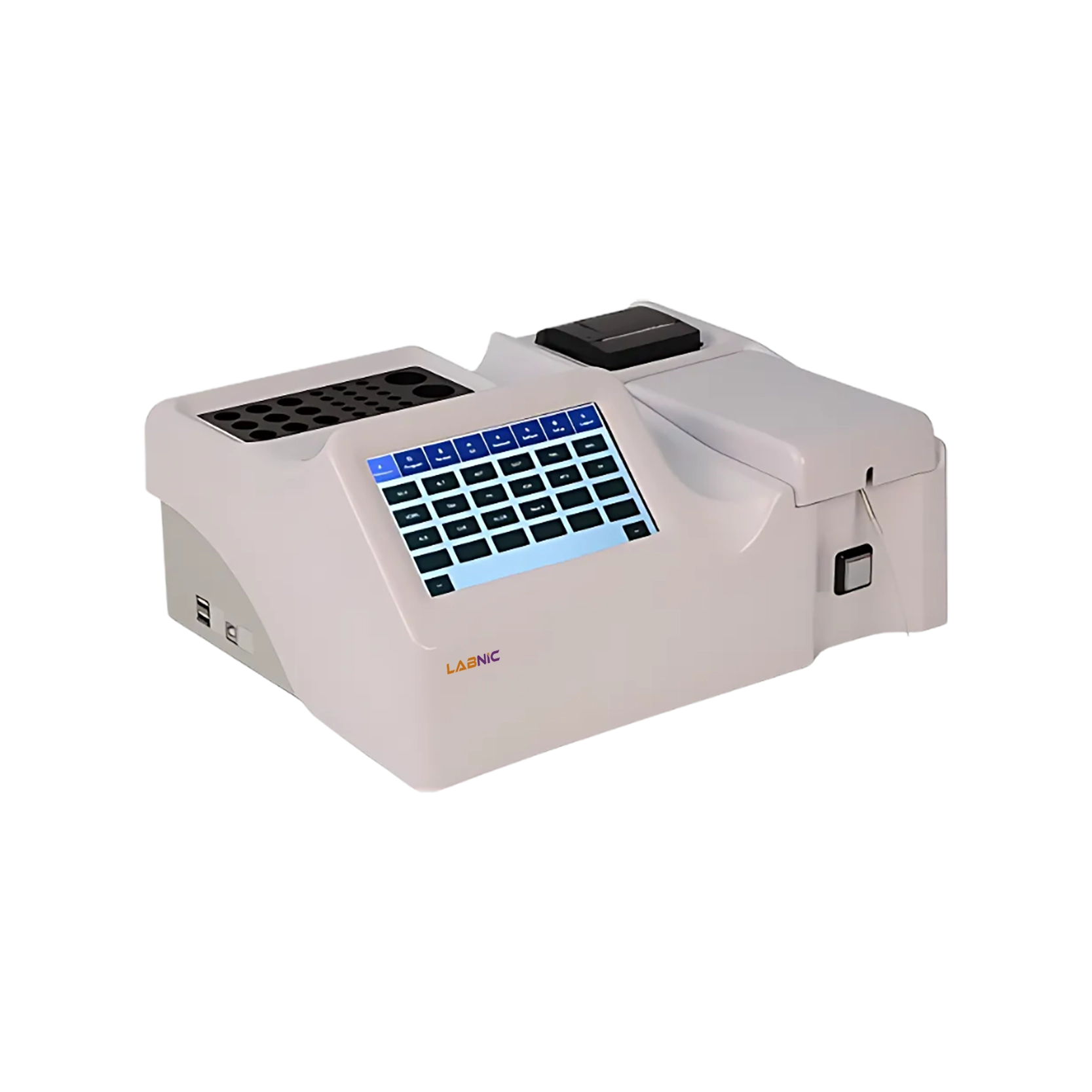
Semi-Biochemistry Analyzer LBN-SA161 operates at a wide range of wavelength, enabling testing of a broad spectrum of parameters. It is equipped with digital control panel for smooth operation. Integrated with tungsten halogen lamp for clear display of results. Designed for easy set-up in laboratories with limited space. Our Semi-Biochemistry Analyzer consumes low power to reduce operational costs.
| Wavelength | 340 nm, 405 nm, 450 nm, 505 nm, 546 nm, 578 nm, 630 nm |
| Wavelength Accuracy | ± 1 nm |
| Temperature Control | 25°C, 30°C, 37°C |
| Incubator Temperature | 37°C |
| Photometric Accuracy | 0 to 0.2 Abs |
| Stability | < 0.005 Abs/ 10 min |
| Linearity | 0 to 1.5A < 1.0% |
| Storage | Stores min. 190000 Results |
| Light Source | Tungsten Halogen Lamp |
| Display | Colour LCD with Touch Screen |
| Thermal Printer | |
| Power Supply | 110 to 230 VAC |
| Dimension | 530 × 420 × 310 mm |
| Weight | 8.5 kg |
Semi-Biochemistry Analyzer LBN-SA161 is commonly used in pharmaceutical, food industries, clinical diagnostics and biomedical research for biochemical analysis and quality control.
Semi-Biochemistry Analyzer LBN-SA161 is commonly used in pharmaceutical, food industries, clinical diagnostics and biomedical research for biochemical analysis and quality control.
Most Frequently Asked Questions
1. What is a semi-biochemistry analyzer?
Ans. A semi biochemistry analyzer is a laboratory instrument used to analyze biochemical parameters in blood, urine, and other biological samples. It requires manual sample preparation and reagent handling.
2. Does a semi-biochemistry analyzer require calibration?
Ans. Yes, regular calibration is necessary to maintain accuracy and reliability in test results.
3. Can a semi-biochemistry analyzer be used in small laboratories?
Ans. Yes, it is ideal for small and medium-sized laboratories, clinics, and diagnostic centers with moderate testing needs.
4. How many samples can a semi-biochemistry analyzer process at a time?
Ans. The capacity varies by model, but most semi-automatic analyzers process one or a few samples at a time, requiring manual input for each test.
5. How does a semi-biochemistry analyzer work?
Ans. It measures the concentration of biochemical substances in a sample by using photometric techniques, where light absorption helps determine the presence and quantity of analytes.